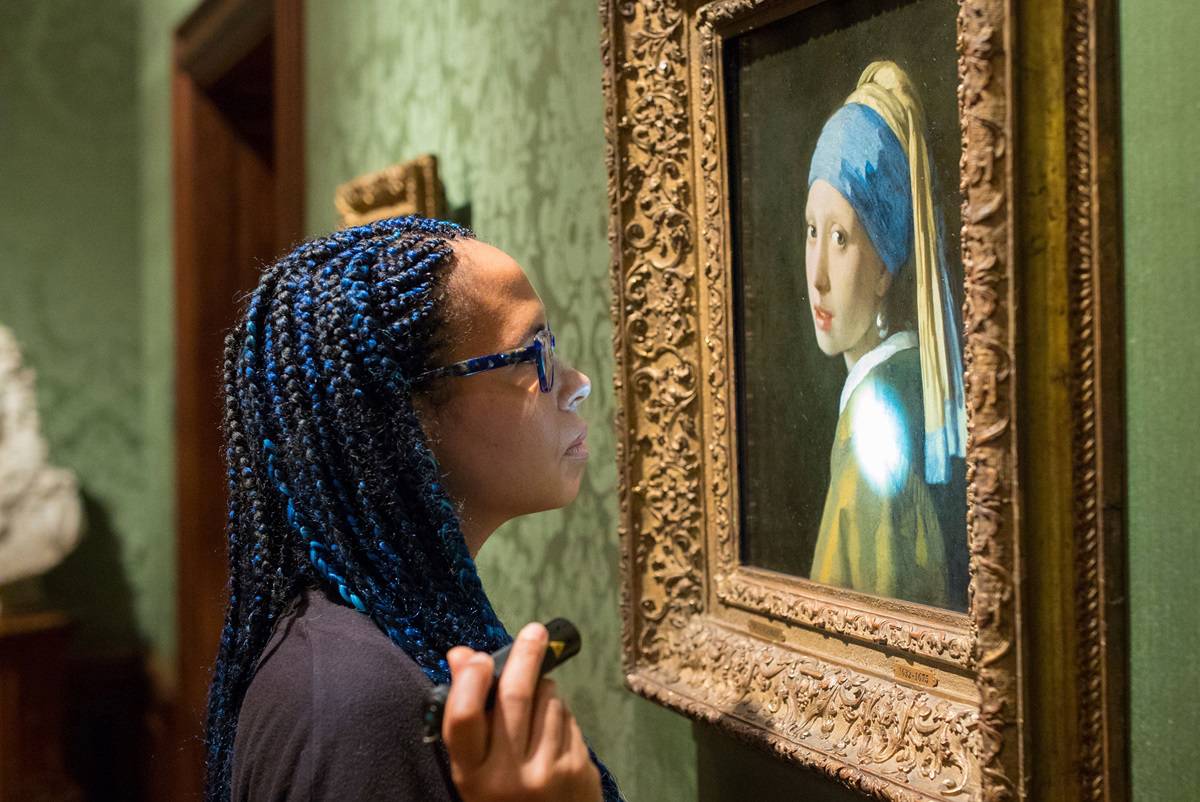Sun 06 October 2024:
In a groundbreaking experiment, scientists have explored how the human brain reacts when it encounters one of the most iconic paintings in art history: “Girl With The Pearl Earring”, painted by Johannes Vermeer. Commissioned by the Mauritshuis Museum in The Hague, where the 17th-century masterpiece is housed, the study delved into the neurological responses of viewers as they gazed upon this timeless artwork.
A Mesmerizing “Sustained Attentional Loop”
Neuroscientists discovered that the painting triggers a phenomenon known as the “Sustained Attentional Loop.” This effect keeps the viewer’s attention fixed on the painting for longer periods compared to other artworks. As Martin de Munnik, a researcher from Neurensics, explained, the observer’s gaze is instinctively drawn first to the girl’s eye, then to her mouth, followed by the pearl, before looping back to her eye.
Due to this mesmerizing effect, viewers find themselves unable to look away from Vermeer’s masterpiece. “You have to pay attention whether you want to or not. You have to love her whether you want to or not,” said Munnik, highlighting how the painting’s composition captivates the brain in a way that other pieces of art do not.
__________________________________________________________________________

https://whatsapp.com/channel/0029VaAtNxX8fewmiFmN7N22
__________________________________________________________________________
The Brain’s Deep Connection: Consciousness and Identity
Interestingly, the neuroscientific study revealed that the precuneus—a part of the brain associated with consciousness and personal identity—was the most stimulated area during the viewing of the painting. This suggests a deep psychological engagement with Vermeer’s work, beyond simple visual appreciation. “It was predictable that the Girl was special. But the ‘why’ was also a surprise to us,” said Munnik.
VIDEO: Johannes Vermeer’s “Girl with a Pearl Earring” is one of the world’s most popular paintings — and now scientists believe they know why, by measuring how the brain reacts when the work is viewed. pic.twitter.com/8TqQqKTyBJ
— AFP News Agency (@AFP) October 5, 2024
The study marked a historic first: the use of both EEG and MRI scanning technology to measure the brain’s neurological response to a piece of artwork. As Munnik pointed out, “The longer you look at somebody, the more beautiful or more attractive somebody becomes. Why are you familiar with this painting and not with the other paintings? Because of this special thing she has.”

Emotional Response: Genuine vs. Reproduced Art
Another fascinating dimension of the experiment involved comparing the brain’s response to the original Girl With The Pearl Earring versus its reproduction. The findings revealed that the emotional reaction to the authentic painting was ten times stronger than to a copy, underscoring the irreplaceable value of experiencing original works of art.
Martine Gosselink, Director of the Mauritshuis Museum, reflected on the importance of this discovery. “It’s so important to engage with art, whether it’s photography, or dance, or old masters from the 17th century,” she said, stressing the cognitive benefits of art appreciation. “It is important, and it really helps to develop your brain… The brain doesn’t lie,” she added.
This study not only deepens our understanding of Vermeer’s enchanting work but also emphasizes the profound impact of art on the human brain and consciousness.
SOURCE: INDEPENDENT PRESS AND NEWS AGENCIES
______________________________________________________________
FOLLOW INDEPENDENT PRESS:
WhatsApp CHANNEL
https://whatsapp.com/channel/0029VaAtNxX8fewmiFmN7N22
![]()
TWITTER (CLICK HERE)
https://twitter.com/IpIndependent
FACEBOOK (CLICK HERE)
https://web.facebook.com/ipindependent
YOUTUBE (CLICK HERE)
https://www.youtube.com/@ipindependent
Think your friends would be interested? Share this story!





